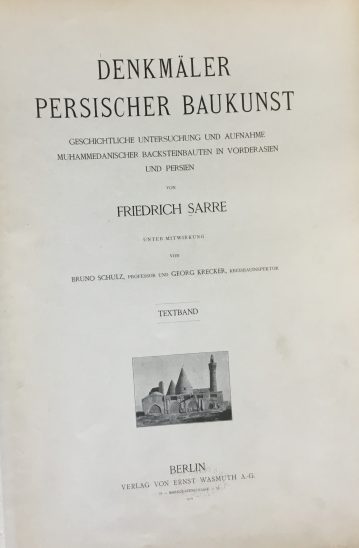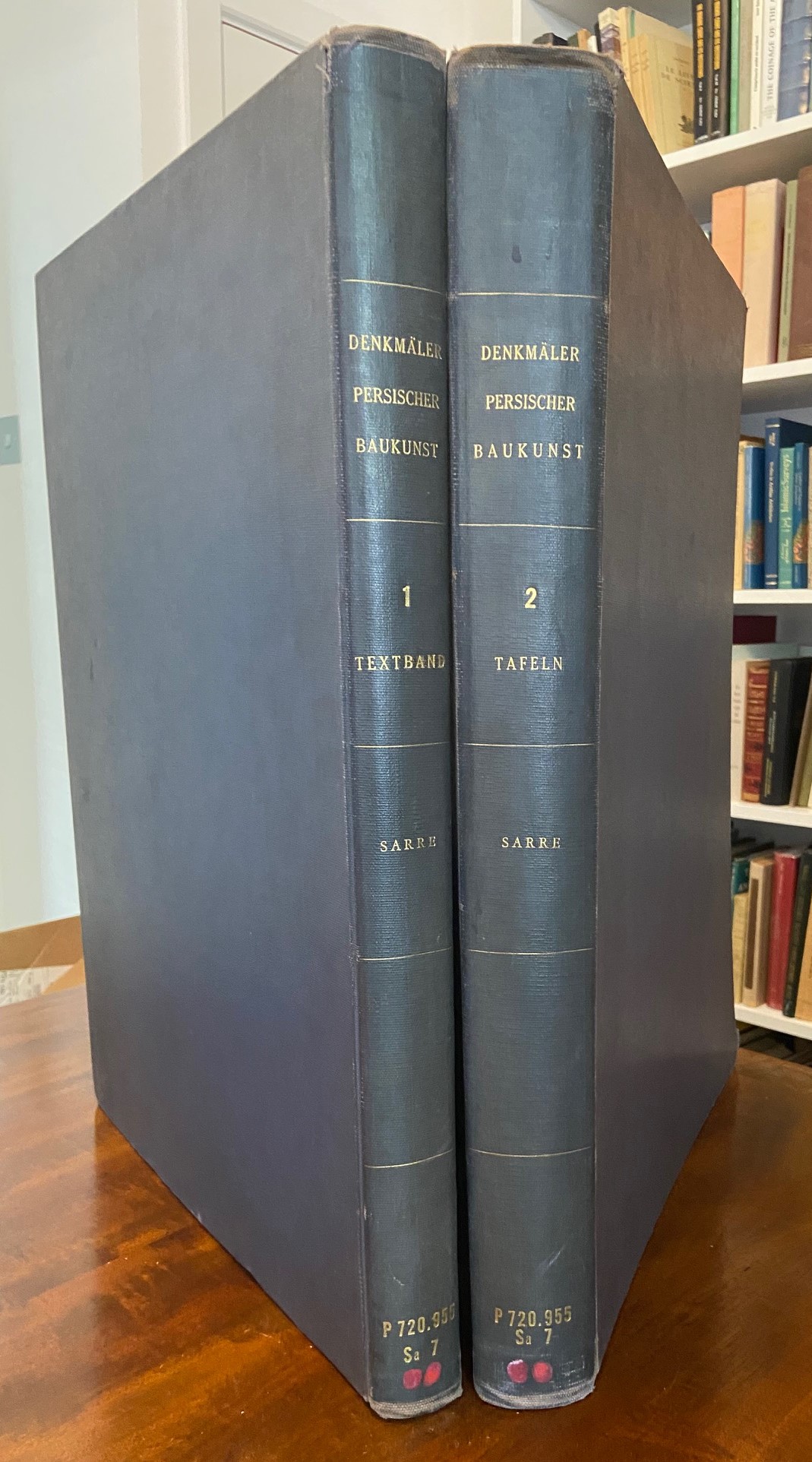Denkmäler Persischer Baukunst. Geschichliche Untersuchung und Aufnahme Muhammedanischer Backsteinbauten in Vordeasien und Persien. TWO VOLUMES.
Sarre, Friedrich.
Synopsis
Of the highest rarity. Initially published in seven consignments of fascicules between 1901 and 1910, Sarre’s Denkmäler Persischer Baukunst contained numerous plates and detailed texts (the latter were issued last), and became the main source for all those who were interested in Persian Islamic architecture. Providing excellent large scale photographs, Sarre’s study has been widely used since then, and it remained the main source on the topic for nearly thirty years, only surpassed by A Survey of Persian Art, the multi-volume survey carried out and written by a dozen scholars from various countries. Sarre’s Denkmäler was extensively used by Eric Schroeder, Arthur Upham Pope and others. Within the two volumes, the Seljuq monuments of Konya are discussed together with several sites located in Iran. The latter include the Safavid ancestral shrine in Ardabīl (begun in the fourteenth century), the mausoleum of Bayezid al- Bistami in Bistam (twelfth to fourteenth centuries), and the Islamic monuments of Isfahan, dating from the eleventh to the seventeenth century. Throughout his career, Sarre placed the Seljuq monuments of Konya (he never wrote about other Anatolian cities) within the framework of Persian art that he established here. The issue of Turkish national and ethnic identity, so important in the 1920s and 1930s, had not yet emerged in the context of art history at the time Sarre prepared the first edition of Denkmäler Persischer Baukunst in the first decade of the twentieth century. Here, as in the Munich exhibition of Islamic art in 1910, the focus on Persian art and culture remains central and integrates Seljuq art into a framework that, according to the narrative of the time, put it at the top of the hierarchy of Islamic art in the eyes of Western scholars and collectors.








